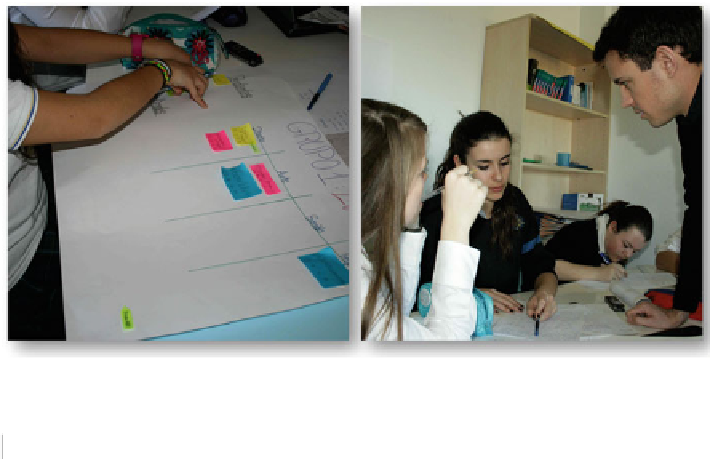Information Technology Reference
In-Depth Information
Fig. 8.4
Planning tools in session 8. 2013 02 14
Fragment 7. Task coordination
Radio interview. 2013 05 25
Radio broadcaster: Are you the boss?
Team Manager: Yeah, well, we are a good group, but when there are many people, it is more
diffi cult to pay attention and a fi rm hand is needed.
Radio broadcaster: But basically you function well as a group, right?
Team Manager: Yes, more or less. At fi rst we used a system we were taught to organize the
work consisting in a large card. I put the names of all the tasks for each of them, for example,
the design of the main character, on the one hand, and then placed it in a column to organize
everything and put it all together…
Students need to coordinate their work. Their ideas intersect, and the decision-
making process is collective, although each of them performs their own work.
According to John-Steiner (
2000
), collaboration involves a process of appropria-
tion, in the sense of taking something that belongs to others to rebuild it together.
8.4.4
Phase 4. Creative Collaboration
The differences in the working mode do not impede shared creativity. Several
authors reported distributions of collaborative work in creating video games when
exploring specifi c contexts in companies, semiprofessional, or amateur teams
(Mitchell
2012
; Pulsipher
2012b
; 2013, July). Over four workshop sessions, the
team members performed their task relatively independently and integrated it all in
a game programmed with Game Maker. The students explained it later on, during
the interview, and this allowed us to understand what their roles were and how each
















